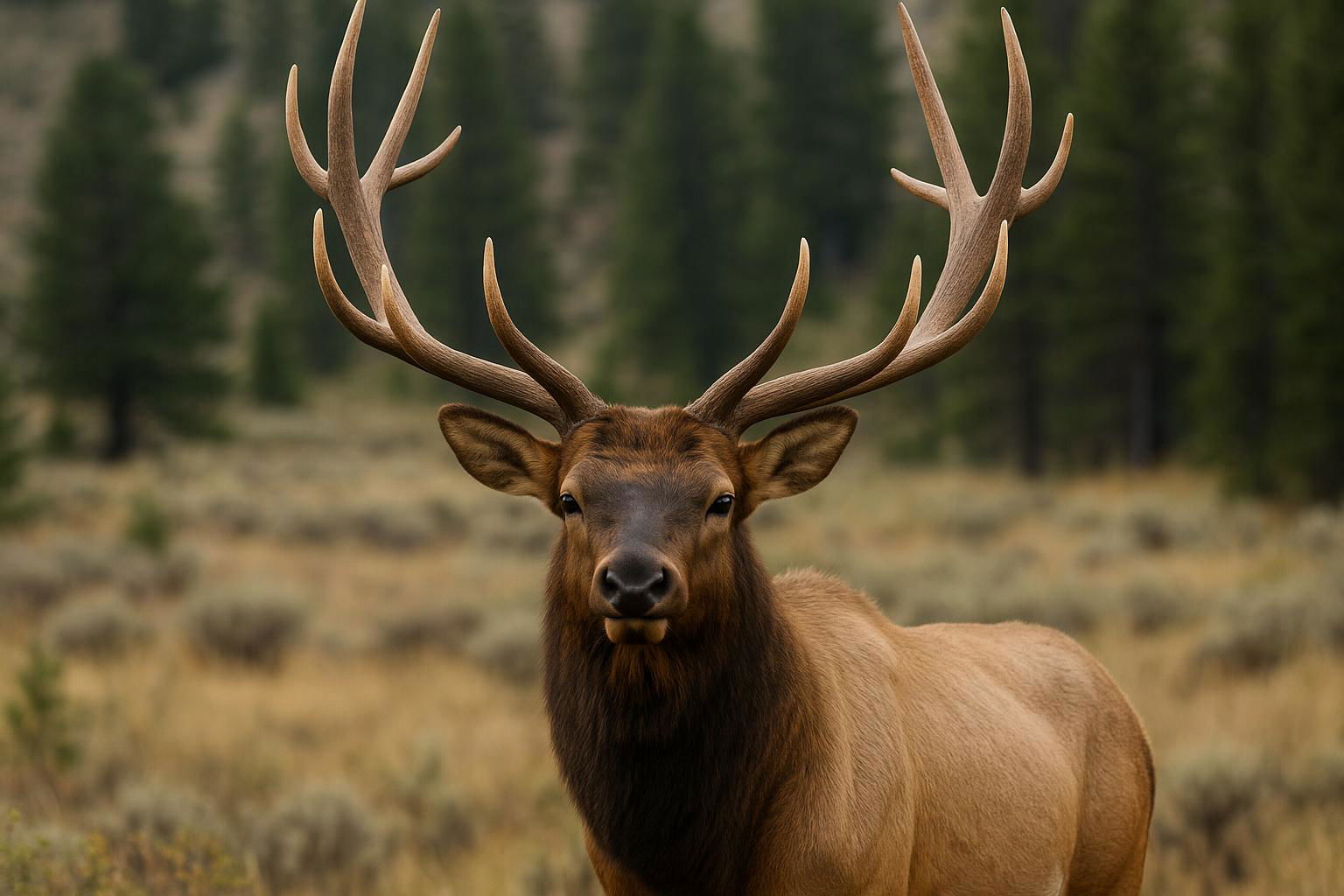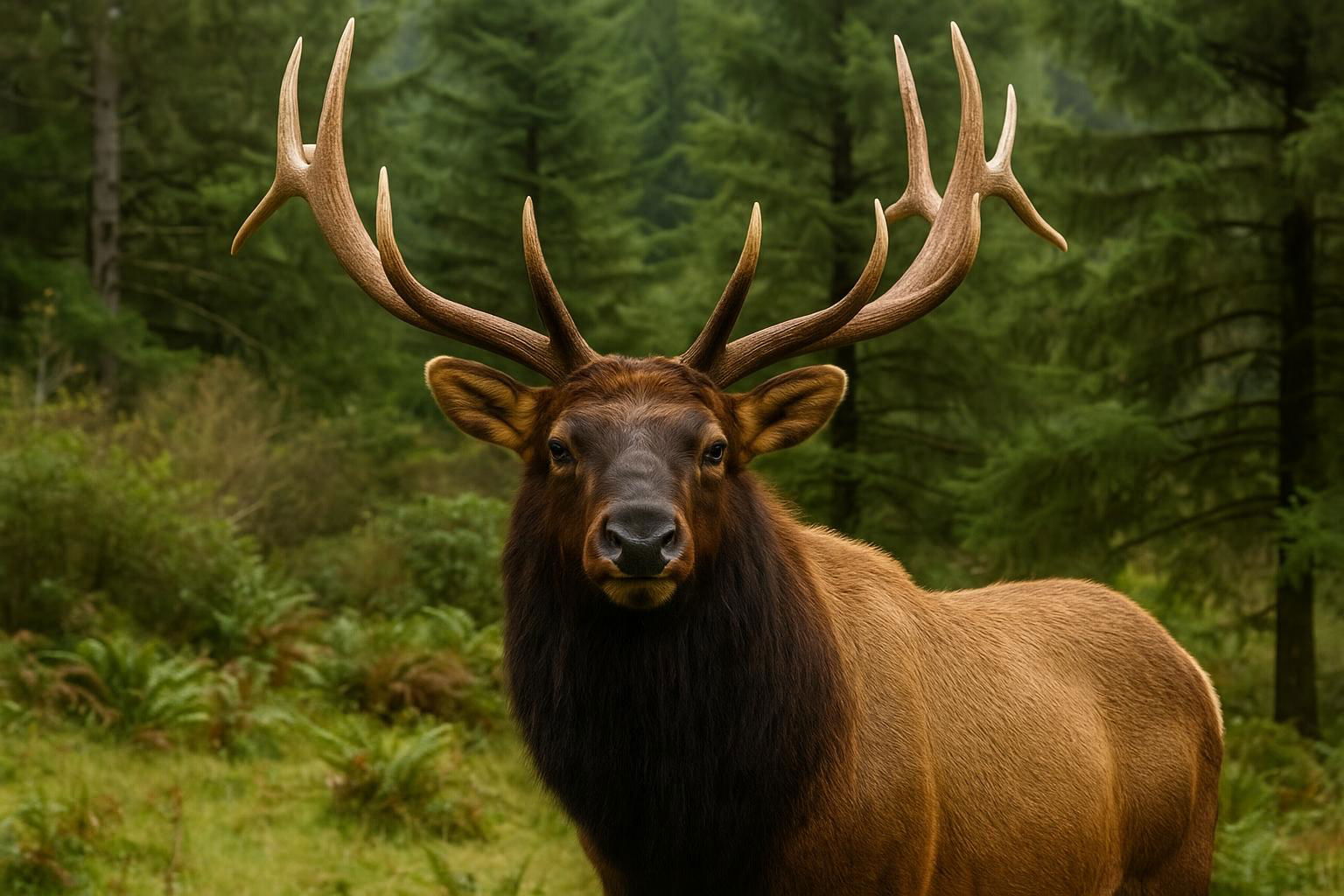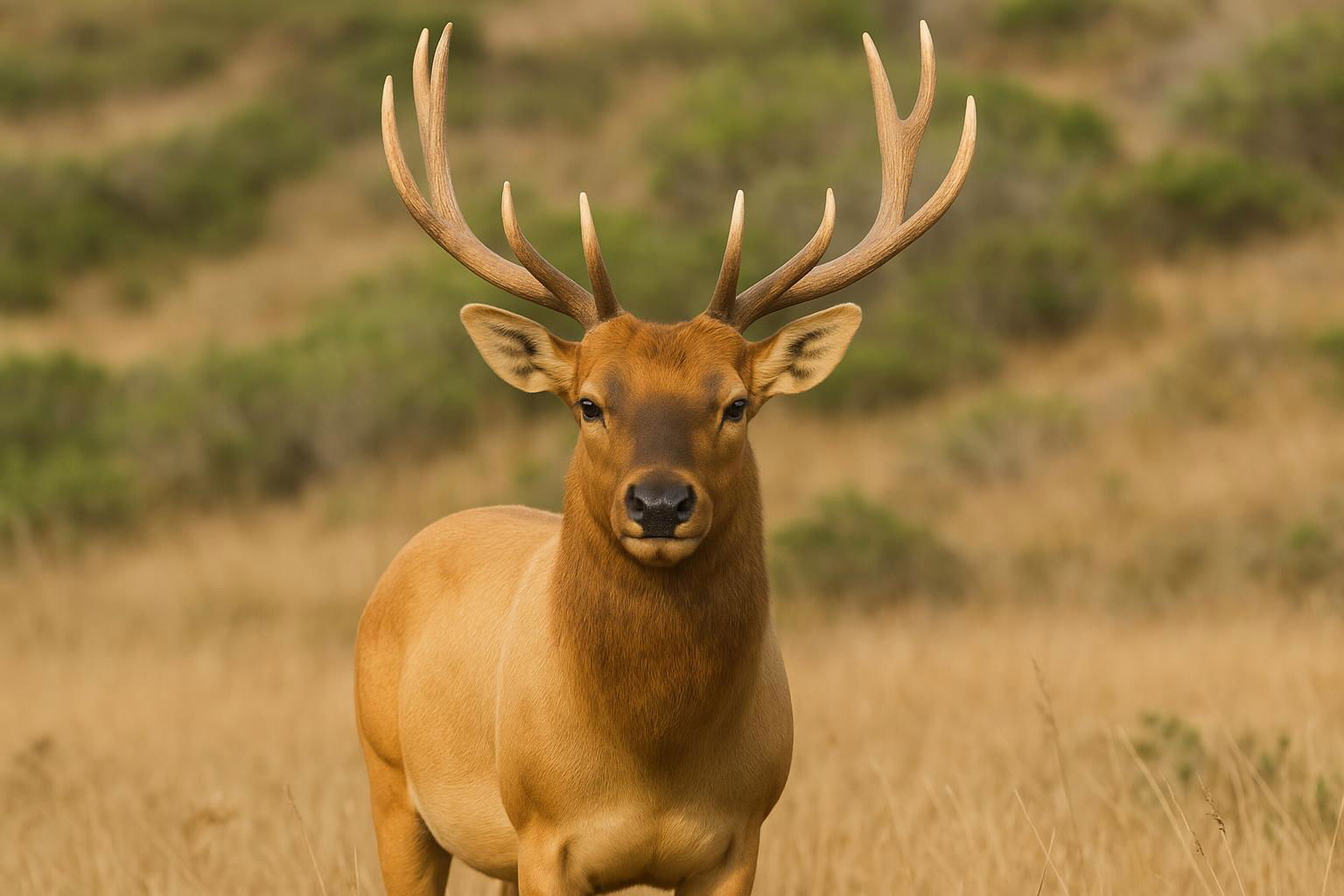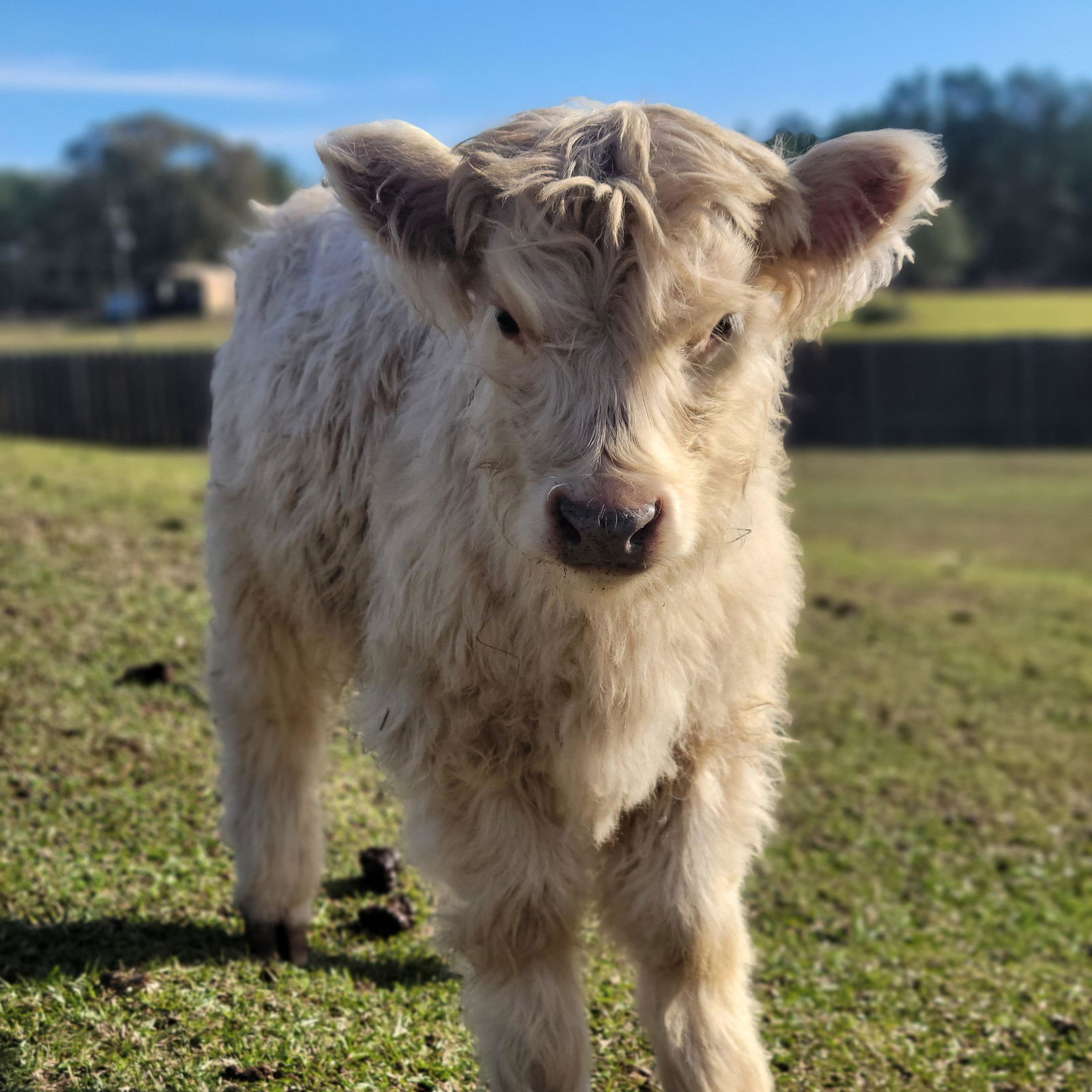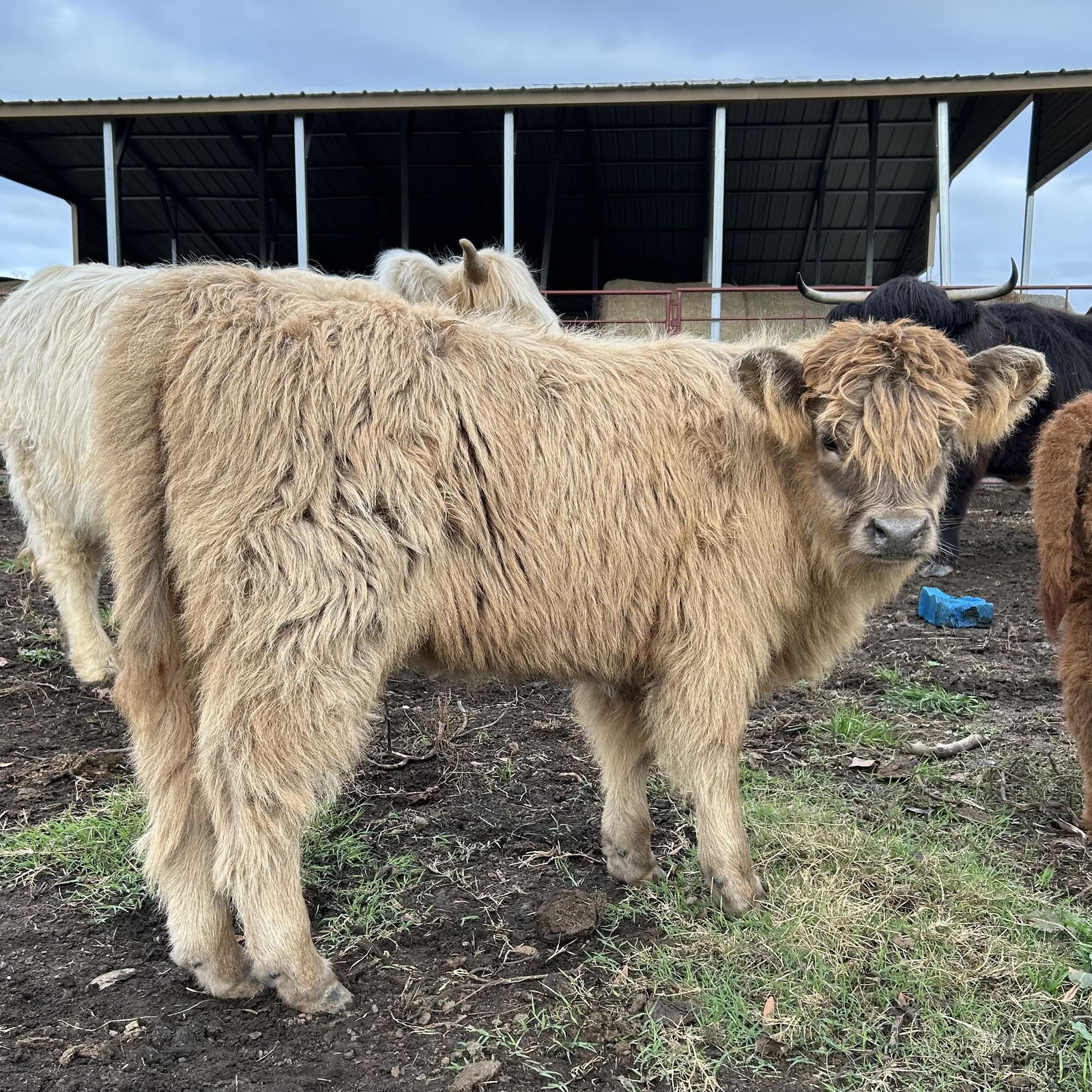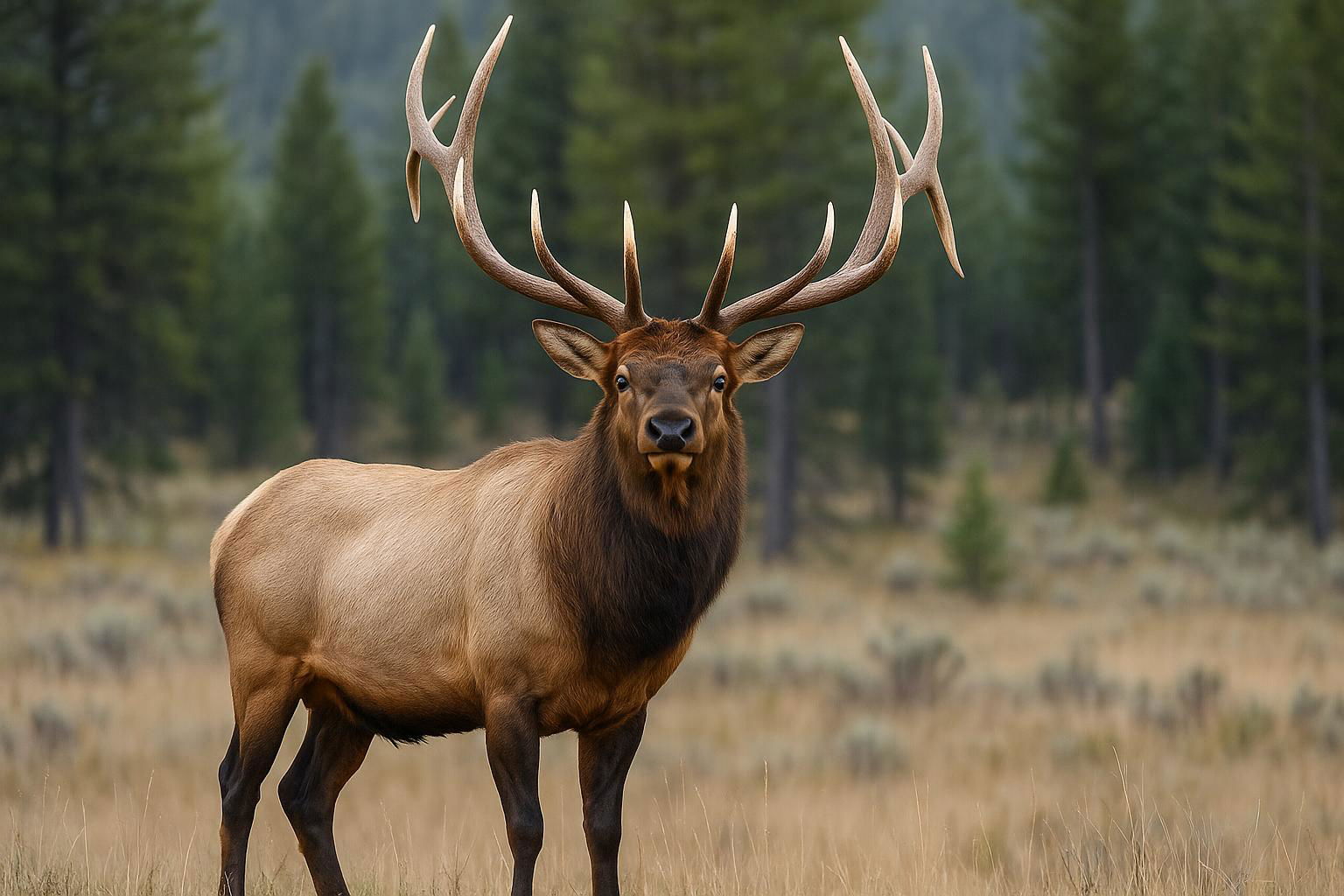
Elk
Cervus canadensis
The Elk, scientifically known as Cervus canadensis, is one of the largest species within the Cervidae family, native to North America and parts of eastern Asia. Revered for their majestic antlers and imposing stature, male Elk, or bulls, can weigh up to 1,100 pounds and stand nearly five feet at the shoulder, while females, or cows, are slightly smaller. Elk are distinguished by their robust bodies, thick necks, and a distinctive coat that changes with the seasons—ranging from a deep brown in winter to lighter tan during the summer months. Known for their striking bugling calls, particularly during the autumn rutting season, bulls use this haunting sound to attract mates and assert dominance. Elk inhabit diverse ecosystems, from the dense forests and alpine meadows of the Rocky Mountains to the grassy plains of the Midwest. As ruminants, they primarily graze on grasses, leaves, and bark, playing a pivotal role in their ecosystem as both prey and a keystone species. With a highly social structure, Elk form large herds, enhancing their ability to thrive and adapt across varied environments. Despite a history of overhunting that once depleted their numbers, conservation efforts have successfully restored many populations across their native range.
View 24 elk breeders in the Creatures breeders directory.

 All Species & Breeds
All Species & Breeds
 Highland Cattle
Highland Cattle
 Miniature Donkeys
Miniature Donkeys
 All Species Directory
All Species Directory
 Highland Cattle in Virginia
Highland Cattle in Virginia
 Miniature Donkeys in Texas
Miniature Donkeys in Texas
